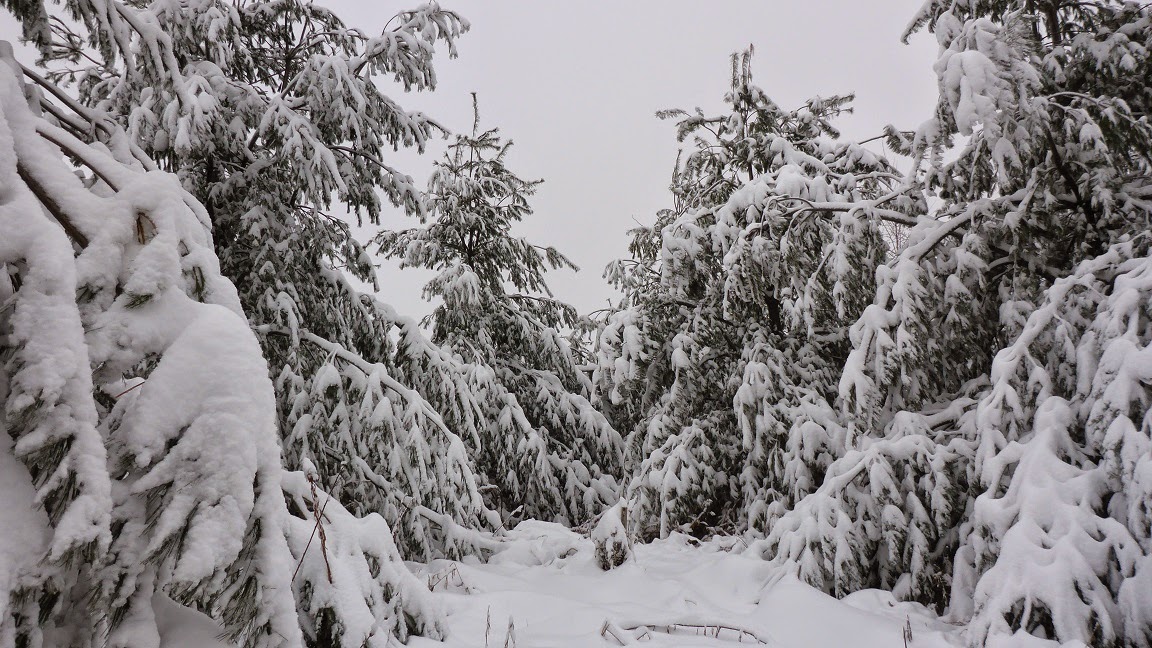 |
| Add caption |
 |
| Note how the snow only adheres to one side of each branch |
 |
| Add caption |
 |
| Add caption |
 |
| A flock of Canada Geese fly above the coral forest |
 |
| Add caption |
 |
| The foot trails were hard to discern in some places |
 |
| Add caption |
 |
| The scene down at the stream bed |
 |
| The small Canada Hemlocks in the forest were made obvious by their laden forms |
 |
| A Raccoon sleeps in a hollow tree - He likely awaits improved traveling conditions |
 |
| Beneath a canopy of low drooping White Pine boughs is a deer bed from the previous night |
 |
| A White Pine reforestation field is transformed by the snow and ice coating |
 |
| Looking back up toward Spring Farm from the White Pine field |
 |
| Add caption |
 |
| An American Beech - still retaining its leaves, receives a generous plastering of snow and ice |
 |
| Natalie Parent coins the term "Coral Forest" |
 |
| A deer is still able to move about fairly easily |
 |
| From the White Spruce field comes a procession of very strange snowmen |
 |
| Interesting ice formations beneath the beaver dam |
 |
| A crack in the pond ice looks like a river system as seen from space |
 |
| Add caption |
 |
| Just some ice beneath a footbridge |


























